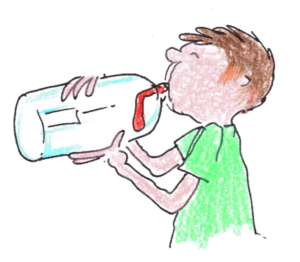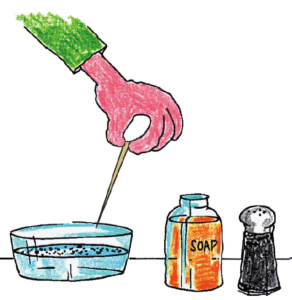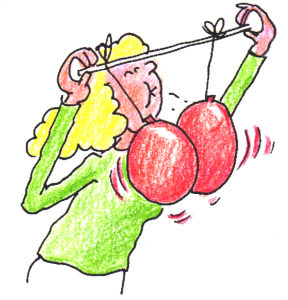All you need is scrap paper and a few minutes of time.
An activity you might use to practice using information you have to predict what might happen next.
This could be a team activity. Use a teacher demonstration to introduce the activity and then have each team try it with one variation. Report results to the class.
All you need is a plastic bottle and a balloon!
Insert the balloon into a clean empty plastic bottle and pull the mouth of the balloon over the mouth of the bottle.
Ask a volunteer to inflate the balloon. It’s impossible!
Cohesion is a property of liquids. Water is very cohesive, it sticks to itself.
I like using a cohesion activity when a group of students needs to learn to work in teams. This can lead to a discussion about being a cohesive group.
Click on the link for this post to read more and find a link to a free product at my TpT store that includes a take home activity and a dozen copyright free images you can use to introduce this topic.
Got two sharp pencils? That’s all this quick science activity requires.
A great option when you want to introduce perspective and how we see objects, have just a few minutes of class time, or would like to add an activity to your sub folder.
I’ve included resources for these additional options. Use clever images to show forced perspective. Start a discussion about perspective and seeing from another person’s viewpoint. Talk about adapting to vision loss in one eye.
If you liked Where’s Your Blind Spot and Is There a Hole in my Hand? here’s another quick activity that demonstrates how our eyes can fool us.
In Where’s Your Blind Spot, students learned about spots in their retinas that don’t sense light and information is not sent to the brain.
What if you use two eyes to look across a room but one eye is looking through a cardboard tube?
How does the tube change what you see?
Are you teaching light or optics in your physics class or point of view and showing respect towards others during a class discussion? This activity may be just what you need!
What does it mean to have a blind spot?
Why is it important to be aware of your own blind spots?
This activity easily extends from primary grades to high school…
Another fun demonstration to add to a science unit, use for a science night, or show students just for fun. No prep time or materials? Use the videos at the end of this post to prompt a conversation about science! Depending on the age of your students this could be demonstrated by a small team of capable students. All you need is two balloons of the same size, about a meter of string, and a drinking straw. The materials are so common students will be able to repeat the activity at home. 🙂 Inflate two balloons to the same size. Tie …
Need a quick thought provoking demonstration that inspires a conversation in your classroom? Perhaps another activity to demonstrate air pressure that will enrich your weather or physics unit? All you’ll need is a wooden spool, an index card, and a thumbtack. Take a deep breath and exhale slowly to show students the power of air or let Dr. Boyd F Edwards demonstrate it for you! Trim a 3†x 5†index card in half to create a 3†x 2.5†card. Push a tack into the center of the card.  Place the point of the tack into the tube in the center of a wooden …
It’s April, almost May. Need a quick activity to punch up the enthusiasm in your science class? This activity could be part of a weather unit with air and wind. It could be added to a physics unit about force and air pressure. It’s a great demonstration that students can share with family members at a science night or open house. Â Turn on the hair dryer and aim the flow of air up. Carefully balance a ping-pong ball in the stream of air. Gently tilt the hair dryer. How far can you tilt the hair dryer before the ball …










